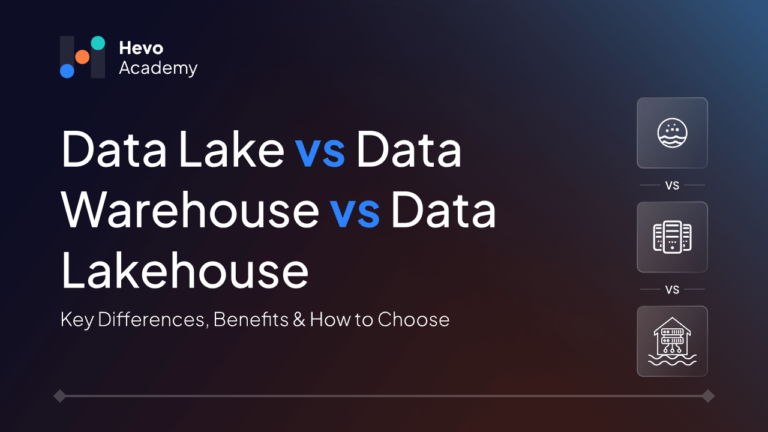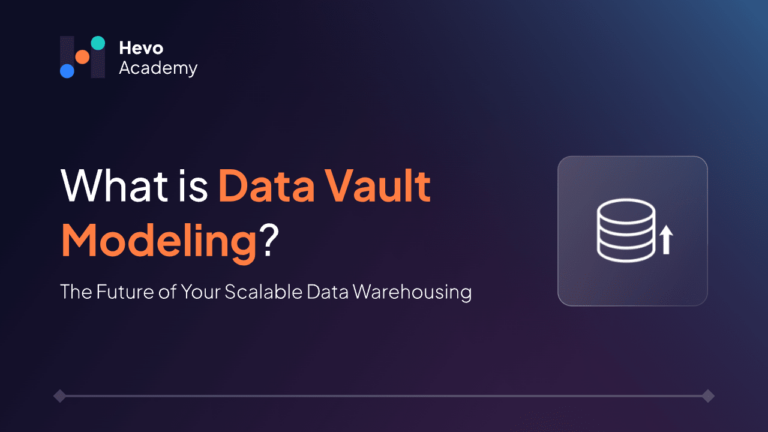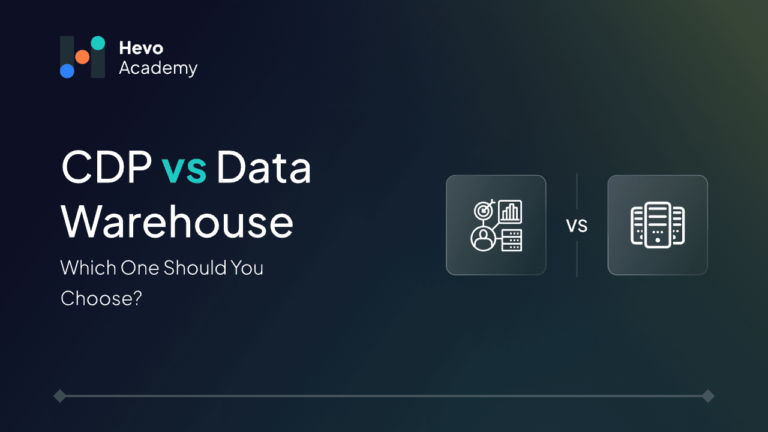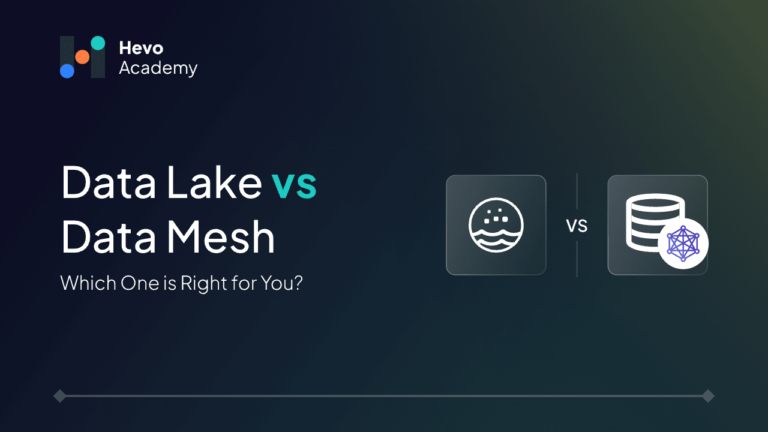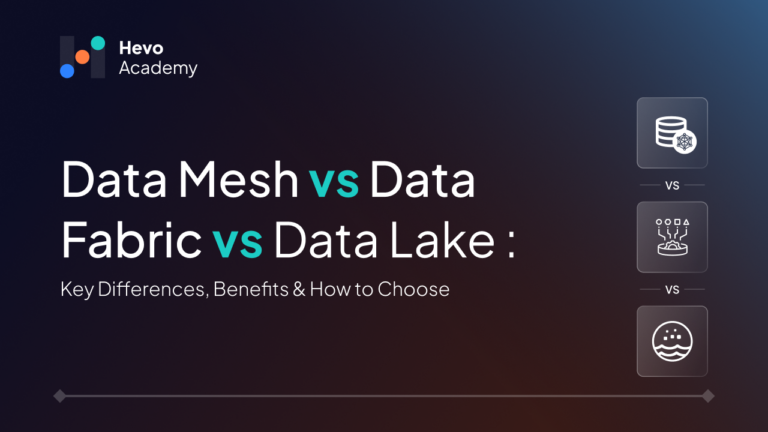In the digital world like today, organizations work with massive amounts of structured, semi-structured, and also unstructured data. Various data architectures have been developed to store, process, and analyze such massive data efficiently. These architectures include the data lake, the data warehouse, and the most recent and popular data lakehouse.
Table of Contents
When deciding which architectures fit the best for the different available choices among the Lake, the Warehouse, and the Lakehouse, can sometimes be difficult. Thus in this blog, you will explore data lake vs data warehouse vs data lakehouse – differences and use cases for each of these to help you understand and determine which fits the best for your business needs.
What Is a Data Lake?
The data lake is a centralized data repository that allows organizations to store and process large volumes of raw, unstructured, semi-structured, and structured data at any scale. Data lakes are a preferred choice for data architecture when you want to store the data in its native format. Data lakes are for those organizations that look for more flexibility with data processing and analysis.
What Are the Key Components of a Data Lake?
Let us break down the data lake into its core components and discuss in brief the following:
| Component | Use |
| Storage Layer | Stores vast amounts of raw data without a predefined schema. |
| Metadata Management | Metastore and indexing of data made it efficient. |
| Data Ingestion | Allows batch and real-time data ingestion from multiple sources |
| Processing & Analytics | Supports big data frameworks like Apache Spark and Presto for large-scale analytics. |
| Security & Governance | Ensures data access controls and compliance. |
You can compare data mesh vs data fabric vs data lake to choose the right one for your needs.
Example Use Case
Companies working mainly with unstructured, flattened data, like ones leveraging IoT data, such as home device manufacturers, use data lakes to collect, store, and analyze sensor data without needing predefined structures.
What Is a Data Warehouse?
A data warehouse is a structured data storage system, optimized for fast query performance and analytical processing. Data needs to be structured and cleansed before entering the warehouse, i.e. schema-on-write. Thus, it is ideal for use in cases like business intelligence and reporting.
What Are the Key Components of a Data Warehouse?
Let us break down the data warehouse into its core components and discuss in brief the following:
| Component | Use |
| ETL (Extract, Transform, Load) | You need to transform the data before loading it into the warehouse. |
| Data Modeling | You can use schema definitions like Star and Snowflake for relational analysis. |
| Query Engine | It is designed for complex analytical queries. |
| Structured Storage | It is optimized structured storage at scale. |
| Security & Compliance | It ensures role-based access control and data integrity. |
You can also take a look at the detailed differences between a data warehouse and a customer data platform (CDP)
Example Use Case
Retail companies like Amazon with massive structured datasets use data warehouses to analyze historical sales trends, customer behavior, and inventory forecasting.
What Is a Data Lakehouse?
A data lakehouse is a hybrid architecture combining the best of both worlds: the data lakes and the data warehouses. The storage flexibility of a data lake along with the structured querying capabilities of a data warehouse. Isn’t this amazing? This allows real-time analytics on both raw and processed data without extensive ETL processes.
What Are the Key Components of a Data Lakehouse?
Let us now break down the data lakehouse into its core components and discuss in brief:
| Component | Use |
| Unified Storage | You can store structured, semi-structured, and unstructured data. |
| Schema Enforcement & Governance | You can run structured queries while maintaining flexibility. |
| Support for BI & AI Workloads | You can run machine learning and business intelligence workloads in the same environment. |
| Transaction Support | It uses ACID transactions for reliability. |
| Performance Optimization | It leverages indexing, caching, and query acceleration for faster processing. |
Example Use Case
Financial institutions use data lakehouses to analyze both real-time transaction data and historical records for fraud detection.
Data Lake vs Data Warehouse vs Data Lakehouse – Key Differences
Now that you understand each architecture and its use cases, let’s compare them head-to-head.
| Scope | Data Lake | Data Warehouse | Data Lakehouse |
| Data Type | Raw, semi-structured, structured | Structured | Structured & unstructured |
| Schema | schema-on-read | schema-on-write | Flexible schema enforcement. |
| Storage Cost | Low | High | Moderate |
| Performance | Slower | Faster | Optimized with indexing |
| Use Case | Data science, AI/ML | Business Intelligence | Unified Analytics |
| Query Performance | Limited Optimization | Highly Optimized | Improved over data lakes. |
| Governance & Security | Less strict | Hight Controlled | Governed with flexibility. |
You can also explore data fabric vs data lake and learn which approach is better suited for your organization’s data strategy.
Data Lake vs Data Warehouse vs Data Lakehouse – Detailed Comparison
Now let us try to understand these differences in some detail:
1. Data Type
You can use a data lake to store raw, semi-structured, and structured data, making it ideal for unprocessed information. A data warehouse, in contrast, only supports structured data that has been cleaned and formatted. A data lakehouse offers the flexibility of a data lake while ensuring structured storage similar to a data warehouse.
2. Schema
Data lakes use schema-on-read, meaning the schema is applied when data is accessed. Data warehouses employ schema-on-write, requiring data to be formatted before entering the system. Data lakehouses balance both, allowing flexible schema enforcement with optimized querying.
3. Storage Cost:
Data lakes use inexpensive object storage solutions and thus are the most cost-effective. Data warehouses, requiring structured and optimized storage, tend to have higher costs. Data lakehouses offer a middle ground by integrating cost-effective storage with structured access.
4. Performance
Data lakes are generally slow for queries due to unstructured data under the hood. Data warehouses provide the fastest query performance through pre-structured indexing and optimization. Data lakehouses improve upon data lakes by introducing indexing and caching, significantly boosting query speeds.
5. Query Performance:
Data lakes have limited optimization, leading to slower query speeds. Data warehouses are highly optimized for complex queries. Data lakehouses bridge the gap by integrating performance enhancements such as caching and indexing.
6. Governance & Security
Data lakes often have minimal governance, making them riskier for compliance-heavy industries. Data warehouses are highly controlled and have strict access policies. Data lakehouses provide a flexible yet governed approach, ensuring compliance while maintaining agility.
7. Use Case
Organizations generally prefer data lakes, ideal for AI, machine learning, and large-scale data storage. Data warehouses cater to business intelligence and structured reporting. Data lakehouses serve unified analytics, combining real-time and historical analysis.
When to Choose a Data Lake, Data Warehouse, or Data Lakehouse?
- Choose a Data Lake:
- When you need to store large volumes of raw, unstructured data.
- When you want to explore and discover new insights from your data.
- When you require a flexible and scalable storage solution.
- Choose a Data Warehouse:
- When you need to perform business intelligence and reporting on structured data.
- When you require high data quality and consistency.
- When you need fast query and reporting capabilities.
- Choose a Data Lakehouse:
- When you need to combine the benefits of data lakes and data warehouses.
- When you want to support a wide range of use cases, including advanced analytics, machine learning, and business intelligence.
- When you require a unified platform for managing structured and unstructured data.
What Are the Benefits of Using a Data Lakehouse Over Traditional Architectures?
- You get the flexibility to store and process diverse data types, and organizations can easily adapt to changing business needs.
- You can handle large volumes of data, providing a cost-effective solution for growing businesses.
- By using low-cost storage and open-source technologies in data lakes, you can reduce the overall cost of data management and analytics.
- Data lakehouses support real-time processing, enabling organizations to derive timely insights from streaming data.
- Data lakehouses incorporate data governance and quality measures, ensuring that data is reliable and consistent.
Conclusion
Data lakehouses represent a significant evolution in data management, combining the best features of data lakes and data warehouses. By understanding the key components, differences, and benefits of each architecture, organizations can make informed decisions about which solution is right for their needs. Whether you choose a data lake, a data warehouse, or a data lakehouse, the goal is to unlock the full potential of your data and drive business innovation.
Try Hevo to seamlessly integrate and manage your data—sign up for a 14-day free trial today!
Frequently Asked Questions (FAQs)
1. Is Snowflake a data lake or a lakehouse?
Snowflake is primarily a cloud data warehouse, but with recent enhancements, it offers lakehouse-like features.
2. What is an example of a data lakehouse?
Databricks and Snowflake’s hybrid models are prime examples of data lakehouses.
3. Which data lake is best?
The best data lake depends on use cases, but popular choices include AWS S3, Azure Data Lake, and Google Cloud Storage.

